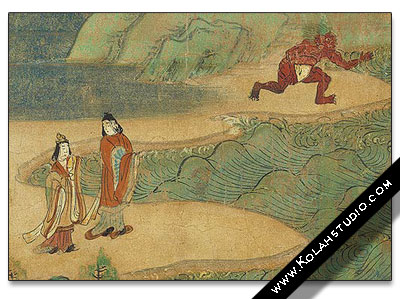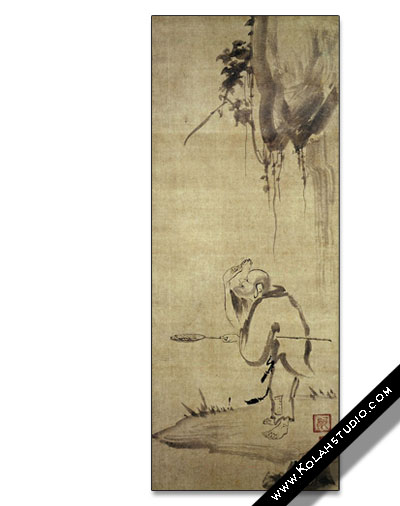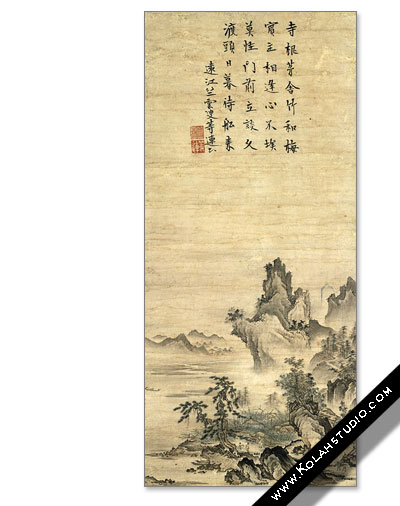The Japanese Art and Architecture


Japanese Art and Architecture, works of art produced in Japan from the beginnings of human habitation there, sometime in the 10th millennium BC, to the present.
Historically, Japan has been subject to sudden invasions of new and alien ideas followed by long periods of minimal contact with the outside world. Over time the Japanese developed the ability to absorb, imitate, and finally assimilate those elements of foreign culture that complemented their aesthetic preferences. The earliest complex art in Japan was produced in the 7th and 8th centuries AD in connection with Buddhism. In the 9th century, as the Japanese began to turn away from China and develop indigenous forms of expression, the secular arts became increasingly important; until the late 15th century, both religious and secular arts flourished. After the Onin War (1467-1477) Japan entered a period of political, social, and economic disruption that lasted for nearly a century. In the state that emerged under the leadership of the Tokugawa clan, organized religion played a much less important role in people’s lives, and the arts that survived were primarily secular.

During the Muromachi period (1338-1573), also called the Ashikaga period, a profound change took place in Japanese culture. The Ashikaga military clan took control of the shogunate and moved its headquarters back to Kyoto, to the Muromachi district of the city. With the return of government to the capital, the popularizing trends of the Kamakura period came to an end, and cultural expression took on a more aristocratic, elitist character. Zen Buddhism, the Ch’an sect traditionally thought to have been founded in China in the 6th century AD, was introduced for a second time into Japan and took root.

Typical of early Muromachi painting is the depiction by the priest-painter Kao (active early 15th century) of the legendary monk Kensu (Hsien-tzu in Chinese) at the moment he achieved enlightenment. This type of painting was executed with quick brush strokes and a minimum of detail. Catching a Catfish with a Gourd (early 15th century, Taizo-in, Myoshin-ji, Kyoto), by the priest-painter Josetsu (active c. 1400), marks a turning point in Muromachi painting. Executed originally for a low-standing screen, it has been remounted as a hanging scroll with inscriptions by contemporary figures above, one of which refers to the painting as being in the “new style.” In the foreground a man is depicted on the bank of a stream holding a small gourd and looking at a large slithery catfish. Mist fills the middle ground, and the background mountains appear to be far in the distance. It is generally assumed that the “new style” of the painting, executed about 1413, refers to a more Chinese sense of deep space within the picture plane.
Painting is the preferred artistic expression in Japan, practiced by amateur and professional alike. Until modern times, the Japanese wrote with a brush rather than a pen, and their familiarity with brush techniques has made them particularly sensitive to painterly values. They found sculpture a much less sympathetic medium for artistic expression; most Japanese sculpture is associated with religion, and the medium’s use declined with the lessening importance of traditional Buddhism. Japanese ceramics are among the finest in the world and include the earliest known artifacts of their culture. In architecture, Japanese preferences for natural materials and an interaction of interior and exterior space are clearly expressed.
Because of secular ventures and trading missions to China organized by Zen temples, many Chinese paintings and objects of art were imported into Japan and profoundly influenced Japanese artists working for Zen temples and the shogunate. Not only did these imports change the subject matter of painting, but they also modified the use of color; the bright colors of Yamato-e yielded to the monochromes of painting in the Chinese manner.

Another major development of the period was the tea ceremony and the house in which it was held. The purpose of the ceremony is to spend time with friends who enjoy the arts, to cleanse the mind of the concerns of daily life, and to receive a bowl of tea served in a gracious and tasteful manner. The rustic style of the rural cottage was adopted for the tea house, emphasizing such natural materials as bark-covered logs and woven straw.
Japanese art is characterized by unique polarities. In the ceramics of the prehistoric periods, for example, exuberance was followed by disciplined and refined artistry. Another instance is provided by two 16th-century structures that are poles apart: Katsura Palace is an exercise in simplicity, with an emphasis on natural materials, rough and untrimmed, and an affinity for beauty achieved by accident; Toshogu Mausoleum is a rigidly symmetrical structure replete with brightly colored relief carvings covering every visible surface. Japanese art, valued not only for its simplicity but also for its colorful exuberance, has considerably influenced 19th-century Western painting and 20th-century Western architecture.
resources: Artcyclopedia.net :: Arthistory.com :: history of Japanese Culture | Farsi translation by : A. Pasha’ee

